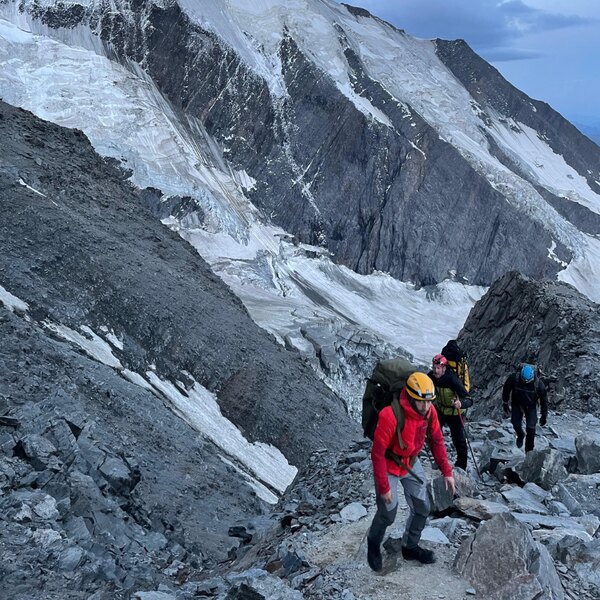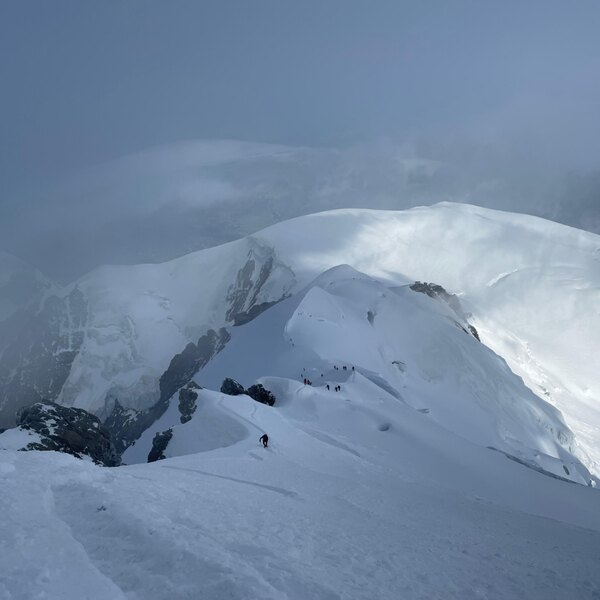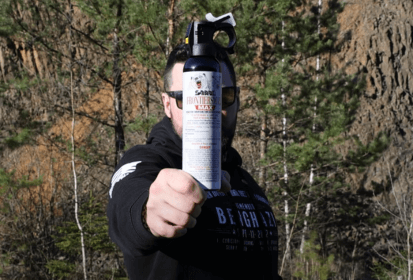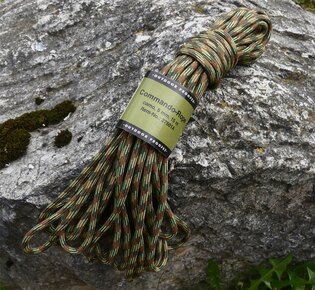Altitude sickness: Risks, symptoms and prevention
Spending time at high altitudes puts significant stress on the human body, especially when proper acclimatization is lacking. Altitude sickness is a group of conditions caused by decreased partial pressure of oxygen at higher elevations. It doesn't only concern climbers—it can also affect hikers, soldiers, and workers in mountainous regions.

Every illness above 2,500 meters is considered altitude sickness until proven otherwise!
4 important rules for altitude sickness
- ✅ Any illness above 2,500 m above sea level is considered altitude sickness until proven otherwise.
- ✅ Never continue ascending with symptoms of altitude sickness!
- ✅ If the condition worsens, descend immediately – until symptoms subside.
- ✅ Never leave a person with AMS alone.
Types of Altitude Sickness
Acute Mountain Sickness – AMS
The most common form of altitude sickness. It typically appears at elevations above 2,500 meters (8,200 feet), and its onset varies depending on factors such as the speed of ascent, physical fitness, and previous experience at high altitudes.
AMS – Common Symptoms
- Headache
- Nausea or vomiting
- Fatigue, weakness
- Loss of appetite
- Difficulty sleeping
High-Altitude Cerebral Edema – HACE
A potentially life-threatening condition that results from swelling in the brain due to high altitude.
HACE – Common Symptoms
- Confusion or altered mental status
- Loss of coordination and balance
- Difficulty walking (e.g., unsteady gait, inability to stand on one foot)
Treatment of HACE:
Immediate descent to a lower altitude—ideally with assistance (transport), complete rest, administration of oxygen, or use of a portable hyperbaric chamber if descent is not possible.
High-Altitude Pulmonary Edema – HAPE
A serious condition that may develop even without prior symptoms of AMS. It occurs when fluid accumulates in the lungs' alveoli.
HAPE – Common Symptoms
- Shortness of breath (especially at rest, worsens with activity)
- Dry cough progressing to wet with bubbling sounds
- Blue lips or fingertips (cyanosis)
- Extreme fatigue and reduced physical performance
Treatment of HAPE:
Again, immediate descent is critical—ideally with assistance. Rest, oxygen administration, and use of a hyperbaric chamber if descent is not an option.
What Causes Altitude Sickness?
The main factor is the reduced partial pressure of oxygen as altitude increases. The air is "thinner"—it contains fewer oxygen molecules per volume, which means less oxygen reaches your tissues. The body compensates by increasing heart rate and respiratory rate, and over time, by producing more red blood cells. However, without sufficient acclimatization, this adaptation may be inadequate.
Prevention
- Ascend slowly – limit elevation gain to 300–500 meters per day once above 3,000 m (9,800 ft).
- Include rest days every 2–3 days without gaining further altitude.
- Stay hydrated and avoid alcohol and sleeping pills.
- Follow the principle of "climb high, sleep low" – hike to a higher altitude during the day but sleep lower at night.
- Use Paracetamol or Ibuprofen for headaches, but avoid stronger medications that may mask important symptoms.
- Prescription medication: Acetazolamide (Diamox, Diluran) may be used in remote or extreme environments—only after consultation with a physician.

Altitude sickness is a condition that can never be completely ruled out.
Treatment
- For mild AMS symptoms: Rest, avoid further ascent, descend slightly if needed, hydrate well, and use mild painkillers (Paracetamol or Ibuprofen).
- For severe HACE or HAPE symptoms: Immediate descent, oxygen therapy, and medical intervention are essential. Use prescribed medications under medical supervision.
Conclusion
Altitude sickness is a real risk that cannot be entirely eliminated. As elevation increases, so does the potential for serious complications. The key to staying safe in high mountains is gradual acclimatization, early recognition of symptoms, and knowing when to descend. Respect your body’s signals—prevention is always better than emergency treatment.
Readers are further interested














































































































































